Naples is a city apart from the rest of Italy. The atmosphere in the streets is unique. Lively, crowded, horn sounds everywhere, scooters slaloming between pedestrian in narrow streets, the smell of pizza … The list would be long to describe Naples. But to give you an idea of how it works in Naples: New York has 8.5 million inhabitants, for 1200 km2. Naples 1 million, for 117 km2. However, the same numbers of cars run the city every day than NYC. As a matter of fact, we decided to reach Naples by public transportation instead of renting a car. And as a summary of the Neapolitan driving:

Naples is the third biggest city of Italy, after Rome and Milan. It is one of the oldest as well, whose destiny is intimately linked to Pompeii and Herculaneum. The city was built on a large panel of civilizations and cultures; Spanish and French influences are scattered all across Naples. Naples abounds with architectural treasuries, and two days is the strict minimum amount of time you will need to explore part of them. It is a good idea to have a travel guidebook with you while discovering Naples: a significant part of amazing palaces are hidden behind a first wall so you wouldn’t suspect that they were there!
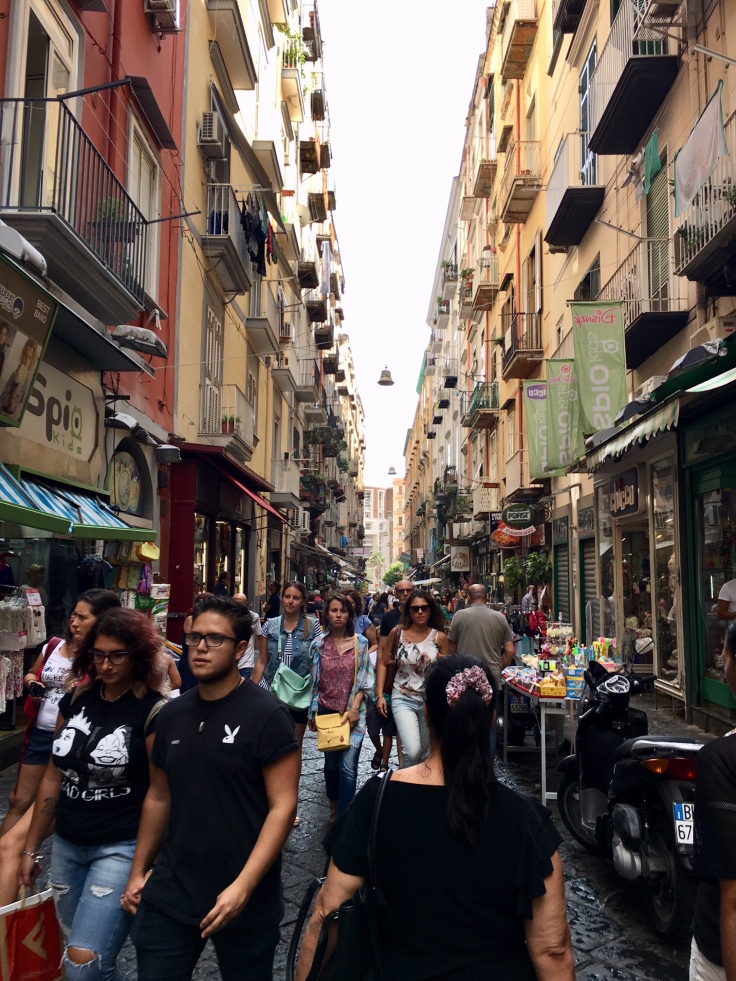
One Place to Eat Arancini: Antica Pizzeria e Friggitoria Di Mateo on via Tribunali. Great arancini served quickly in case you want to eat fast – and eat something else than pizza
The historical center starts via Duomo. From there, a large part of Naples history is located between Via dei Tribunali and via San Bagio Dei Librai. These two streets concentrate an incredible number of churches – and pizzerias.
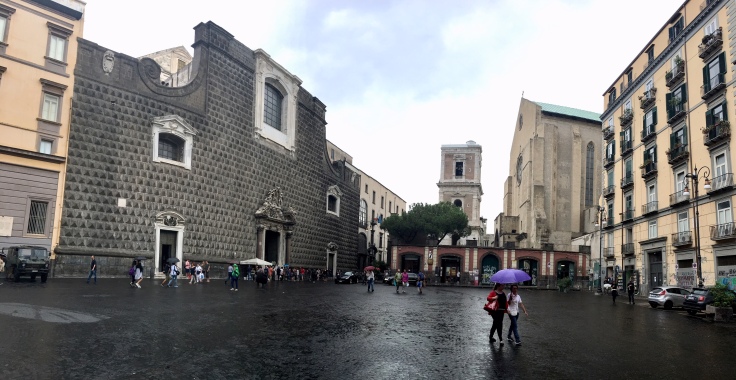
You really should stop to every church in Naples. Even though they do not appear amazing from the outside, I can assure you that the inside abounds of various treasuries that worth to be seen! Among all these churches, two are flabbergasted and must be visited: Chiostro e Monasterio de Santa Chiara, for its courtyard and history, and Chiesa del Gesù Nuovo, located just in front, in a complete different style with a magnificent inside.

Part of the history of Naples, Napoli underground, is a must-see, and a really cool one hour and a half visit. Before the Roman Empire, the Greeks built Naples, christened Parthenope at the time, as perfectly located for trading. Water was missing and aqueducts were built from the mountains around to provide the city. Once in Naples, the water was stored in giant reservoirs underground and redistributed, through public networks but also private, for wealthy citizen. In 1852, aqueducts were shut down, and, until 1942, Napoli undergrounds became a giant dump. The city being under the Allied bombs, the city mayor decided to use the underground networks to protect the citizens. Garbage couldn’t be removed, as too time consuming. So they pressed it.
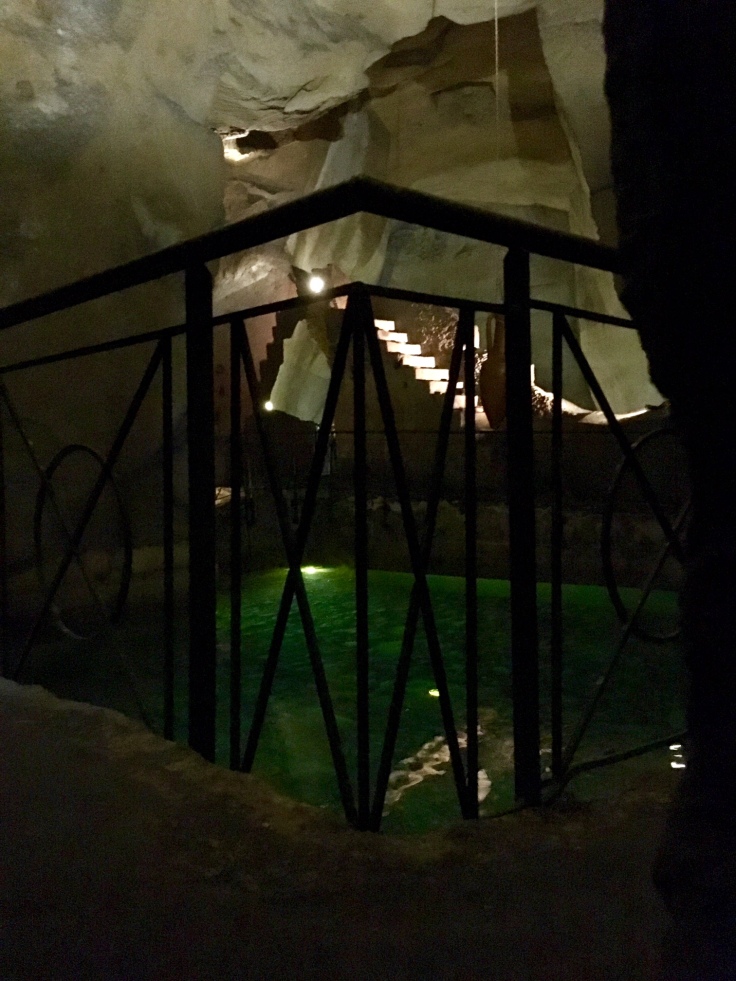
Not far from via dei Tribunali and via San Bagio is the piazza Bellini, circled with bars, students and good Aperol Spritz. Piazza Dante, where is located the Foro Carolino, opens on via Toledo, one of the biggest streets in Napoli center.
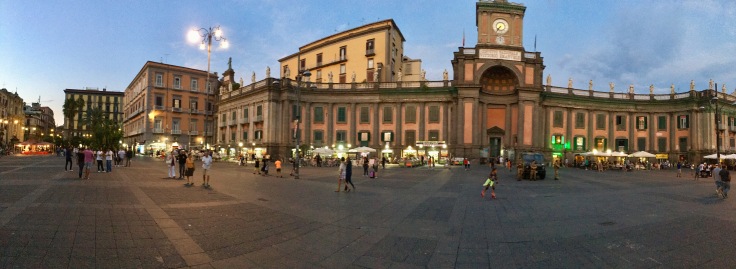
Going down via Toledo, on the right, is the Spanish area, the Quartieri Spagnoli. Hillside differs from the historical center in terms of architecture: all bars and shops!
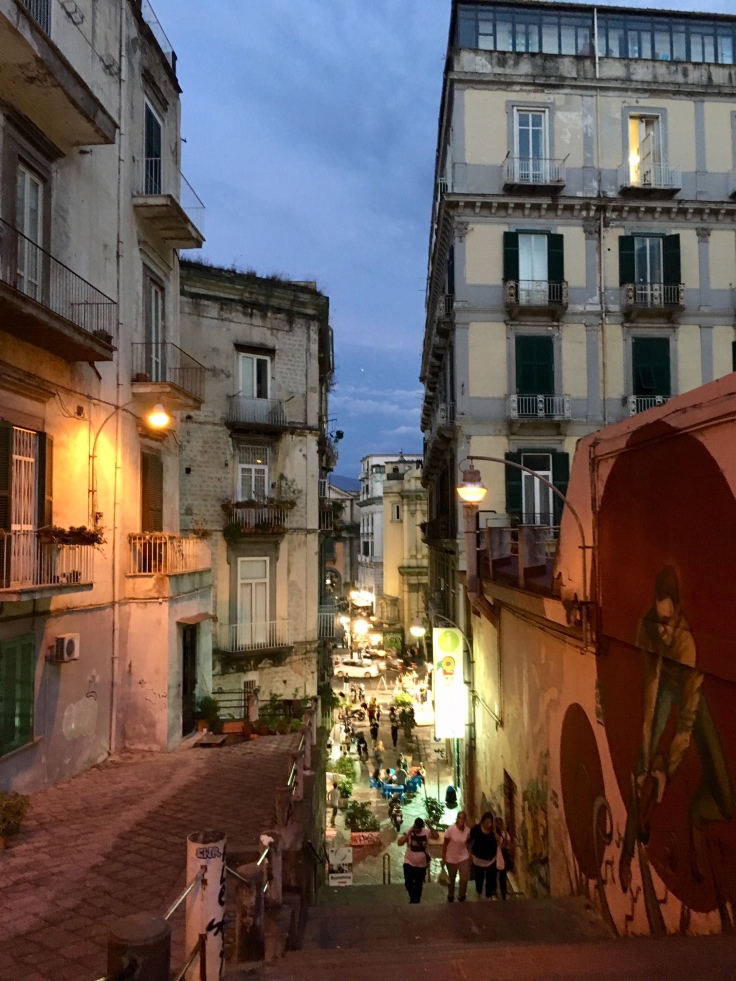
Walking upstairs, the Pedamentina a San Martino leads you to the Castel San’ Elmo and belvedere San Martino, and gives you the best of the two bays of Naples. From the summit of Vomero a great view on the Vesuvio stands in front of you. On one side is Chiaia, the area alongside the sea and its Chiaia Riviera, il Castello dell’Ovo, and the sea.
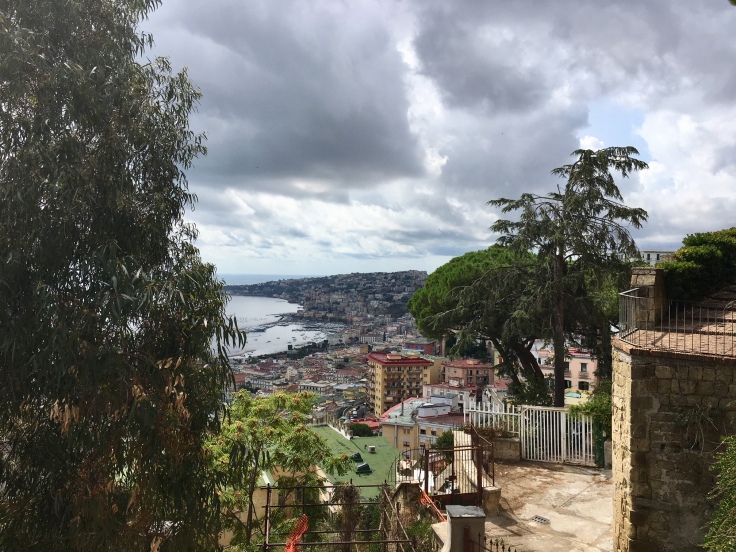
On the other side are the Spanish neighborhood and the historical center.
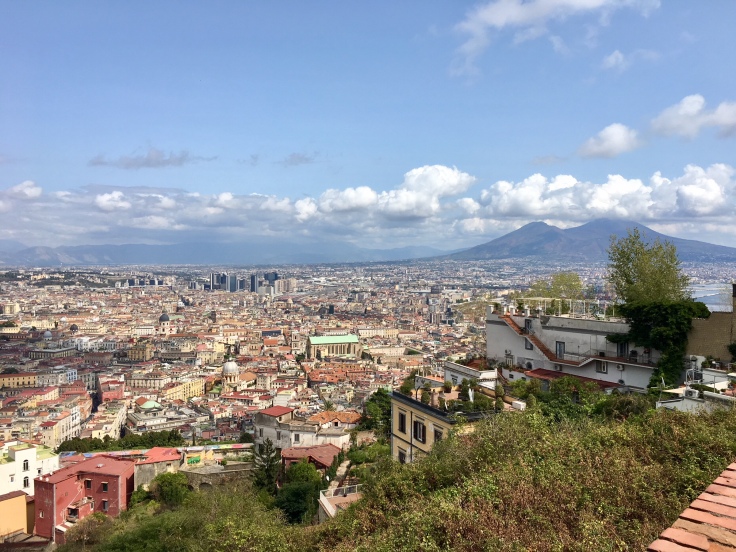
The Museo di San Martino, a former monastery, gives a great view on both sides of the city while sheltering an incredible chapel.

One Place To Eat: Pizzeria San Michele – Next to via Duomo, the place where the original margherita pizza (named after the Queen Margherita of Savoy) was fathered! The restaurant does this only pizza, and people queuing for hours hoping to have a piece of it. Come early and grab your ticket!
Walking down on via Toledo from Piazza Dante is a journey, as shops differ as long as you move into the street.
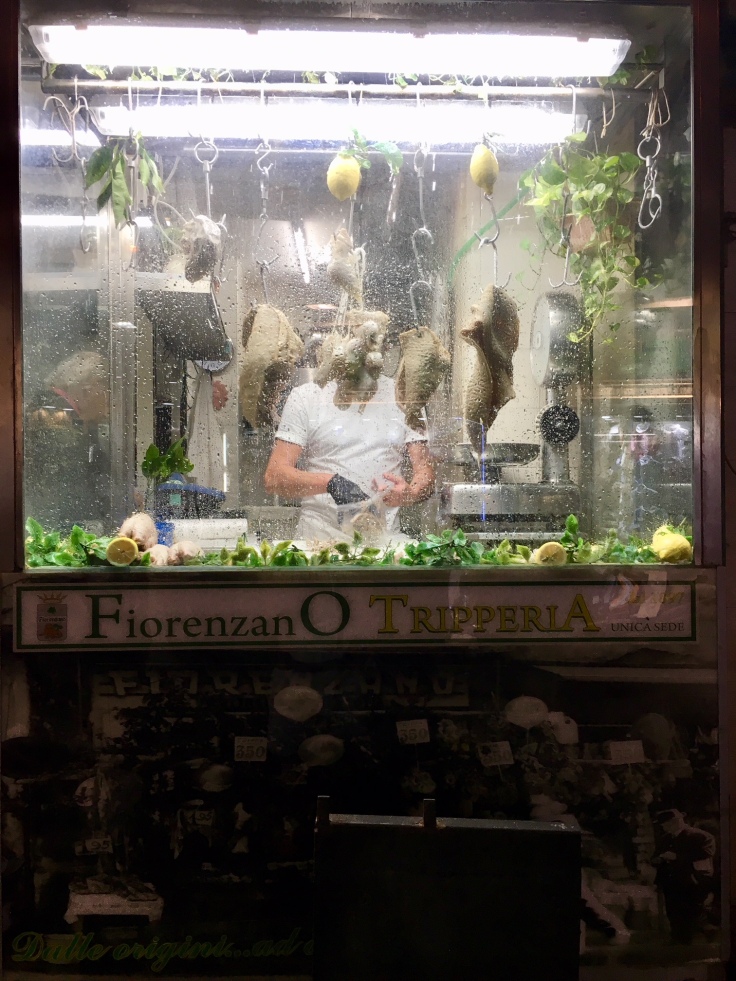
Via Toledo leads to one of the wonders of Naples, the galleria Umberto I, through the Naples City Hall and the Castel Nuovo, built by the French Charles d’Anjou in the XIII century. The galleria was designed by Emmanuele Rocco in the same style than the galleria Vittorio Emanuele II in Milan in the XIX century.

One Place to Drink: Gran Café Gambrinius, at the end of via Toledo – Built in 1860, this café belongs to the history of Naples. Sit inside and enjoy the frescoes on the walls, while tasting the specialty of the house, the hazelnut coffee
Gran Café Gambrinius was also the place, where, among others, Guy de Maupassant, Oscar Wilde, Giovanni Bovio were used to be seen. It was close in 1938, as a key location for opponents to the Mussolini fascist regime, and reopened in the early seventies.
Piazza del Plebiscito is called as such thanks to the plebiscite of October 2, which brought Naples into the united kingdom of Italy, after belonging for a long time to the Bourbons.
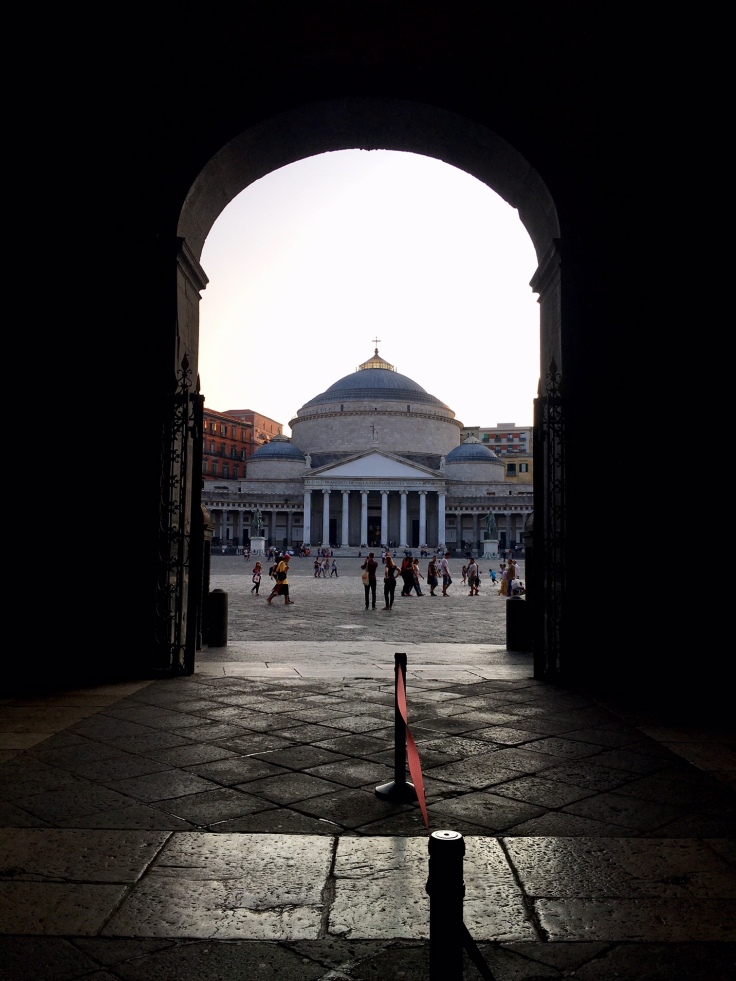
The square is circled with the Basilique San Francesco di Paola, the Biblioteca Nazionale de Napoli Vittorio, and the Palazzo Salerno.

From Piazza del Plebiscito, take Via Chaia, one the most known shopping streets of Naples, which will lead you to the Ponte di Chaia, via dei Mille –the street with all the luxury shops, and the lively area full of bars and restaurants of Chaia, via Giuseppe Fiorelli and Vico Bellodone a Chaia.
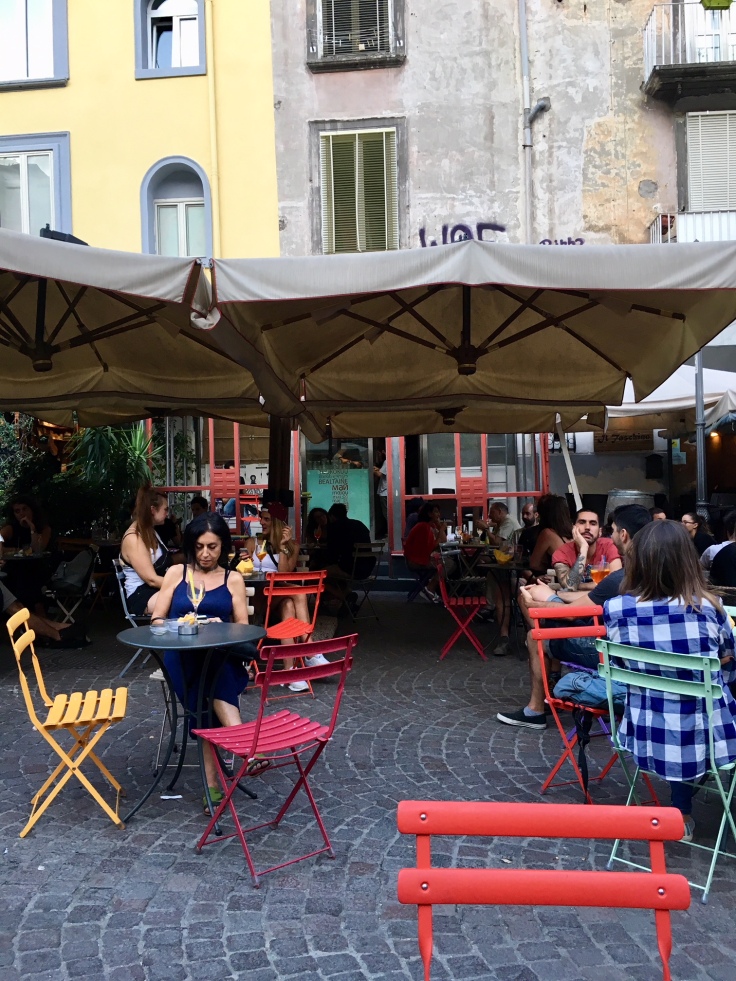
Not far is the third castle of Naples, Castel Dell’Ovo, built by the Norman Kings. The castle has a great view on both bays on Naples: On one side, the harbor and Naples. One the other side, where sunset is, Chaia.
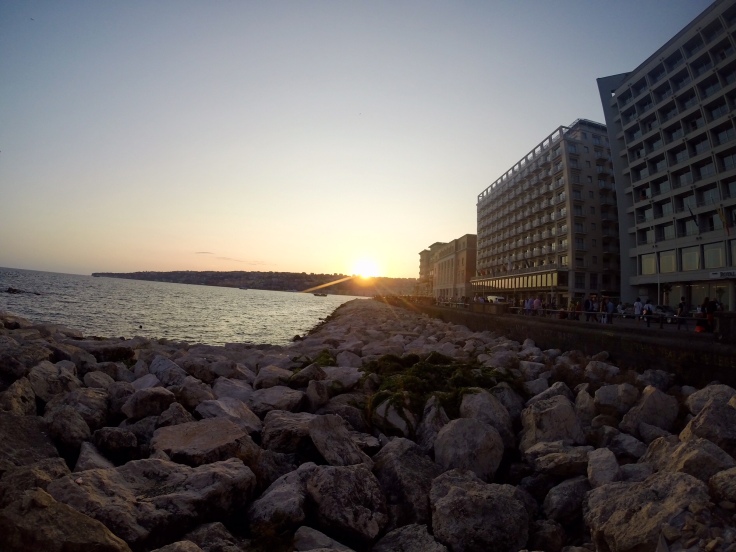
One Place To Stay: B&B Duomo Station, in Via Duomo – Ana is really kind and helpful for everything. Her place is ideally located and charming !

Leave a comment